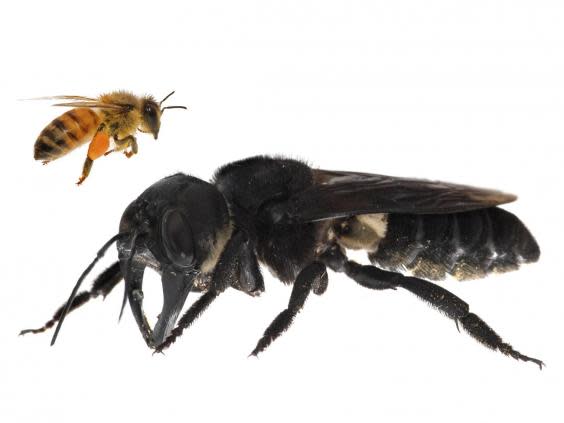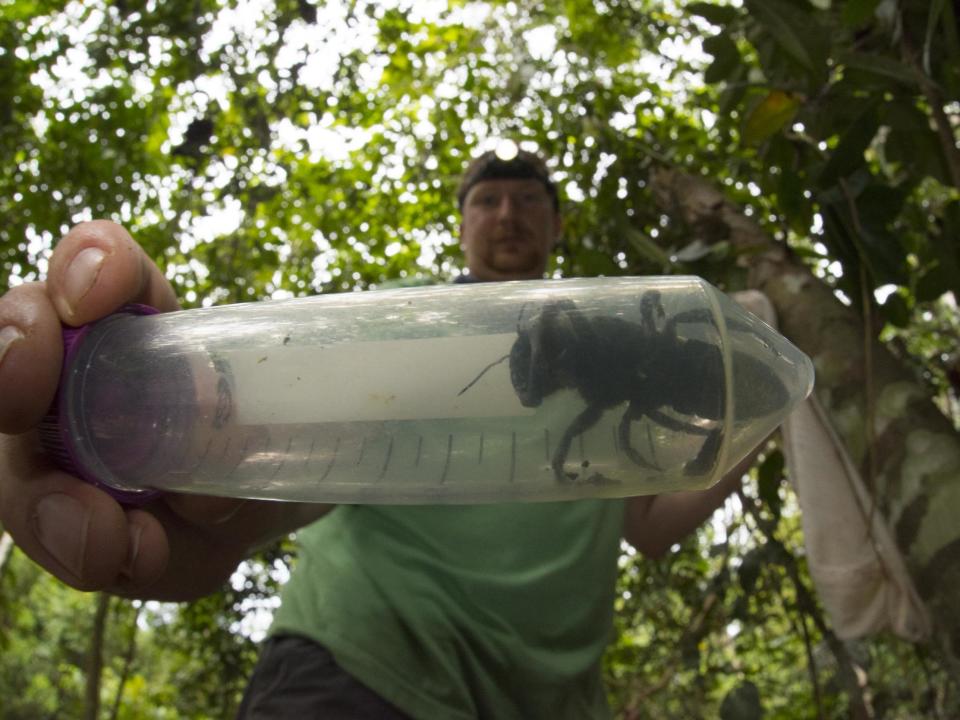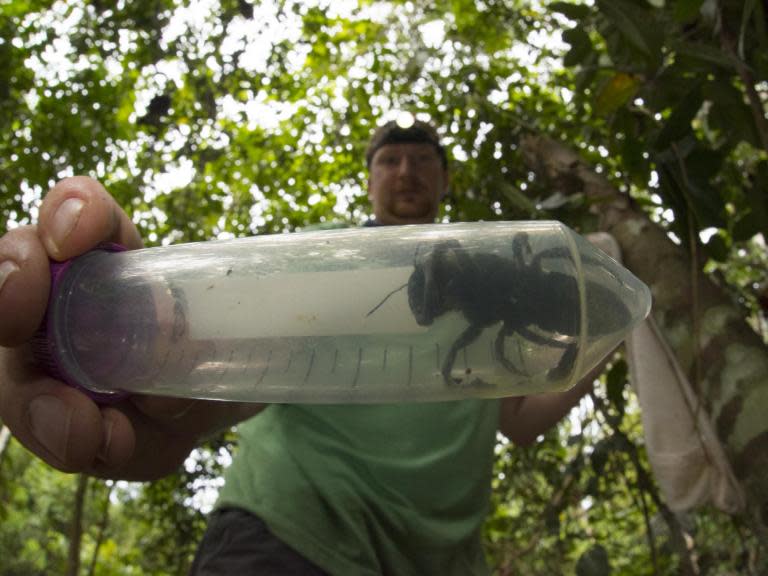World’s largest bee photographed alive for first time after disappearing for 38 years
The world’s largest bee has been photographed alive for the first time after going missing for nearly four decades.
Wallace’s giant bee, four times the size of the honeybee and with large jaws like a stag beetle, was spotted by researchers in Indonesian rainforest.
It was only the third confirmed sighting of the species, once feared to be extinct, and the first since 1981.
The bee was rediscovered by a team of American, Canadian and Australian biologists who set out to search for the species in Indonesia’s tropical North Moluccas islands.
During the expedition last month, they found a lone female Wallace’s giant bee in a termite’s eight feet up in a tree.
“It was absolutely breathtaking to see this ‘flying bulldog’ of an insect that we weren’t sure existed anymore, to have real proof right there in front of us in the wild,” said Clay Bolt, a nature photographer who went on the trip and took the first images of the species alive.
He added: “To actually see how beautiful and big the species is in life, to hear the sound of its giant wings thrumming as it flew past my head, was just incredible.”

Wallace’s giant bee was first discovered in 1858 by famed British naturalist Alfred Russel Wallace as he explored the tropical Indonesian island of Bacan.
He described the female bee, which is about as long as an adult human’s thumb, as “a large black wasp-like insect, with immense jaws like a stag-beetle.”
The species not seen again until 1981, when American entomologist Adam Messer rediscovered it on three Indonesian islands. He observed some of the species’ behaviour, including how it uses its giant mandibles to gather resin and wood for its nests.
Subsequent searches to for the bee had no success until last month.
“Messer’s rediscovery gave us some insight, but we still know next to nothing about this extraordinary insect,” said bee expert Eli Wyman, an entomologist at Princeton University who was on the recent successful expedition. “I hope this rediscovery will spark future research that will give us a deeper understanding of the life history of this very unique bee and inform any future efforts to protect it from extinction.”
Although little is known about the bee, scientists believe it depends primarily tree resin and termite nests in Indonesia’s lowland forest – a habitat threatened by agricultural deforestation.
The bee’s size and rarity have also made it a target for wildlife collectors, and there are currently no legal protections around the trade of the species.
Last year a fresh female Wallace's giant bee sold for $9,100 (£7,000) on eBay.
“We know that putting the news out about this rediscovery could seem like a big risk given the demand, but the reality is that unscrupulous collectors already know that the bee is out there,” said Robin Moore, communicators director at Global Wildlife Conservation, which runs a project searching for lost species.
He added: “The bee’s protection moving forward is going to rely first on the appropriate government officials and stakeholders knowing that the bee even exists, and then their willingness to help protect it.”

 Yahoo News
Yahoo News 

